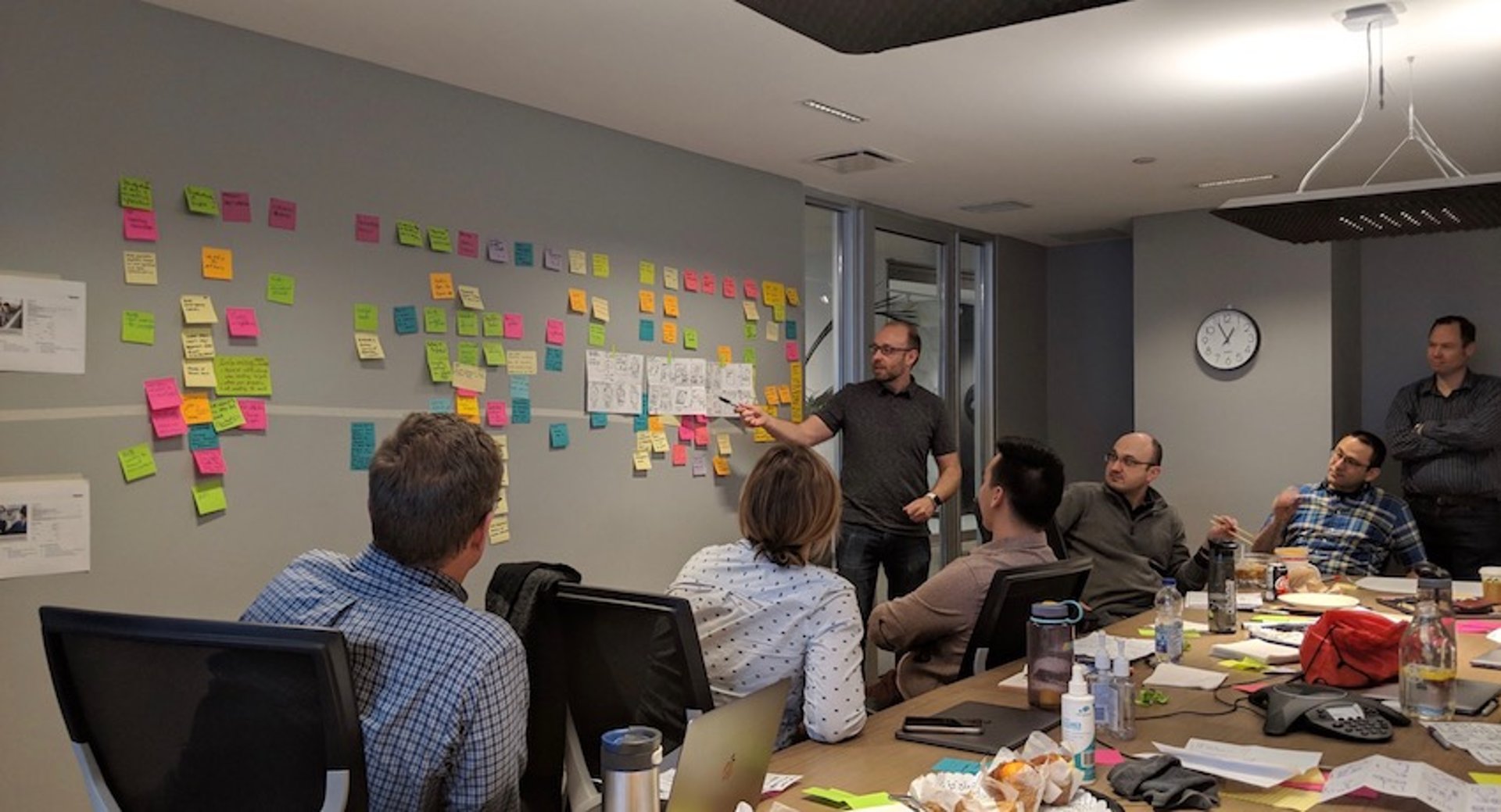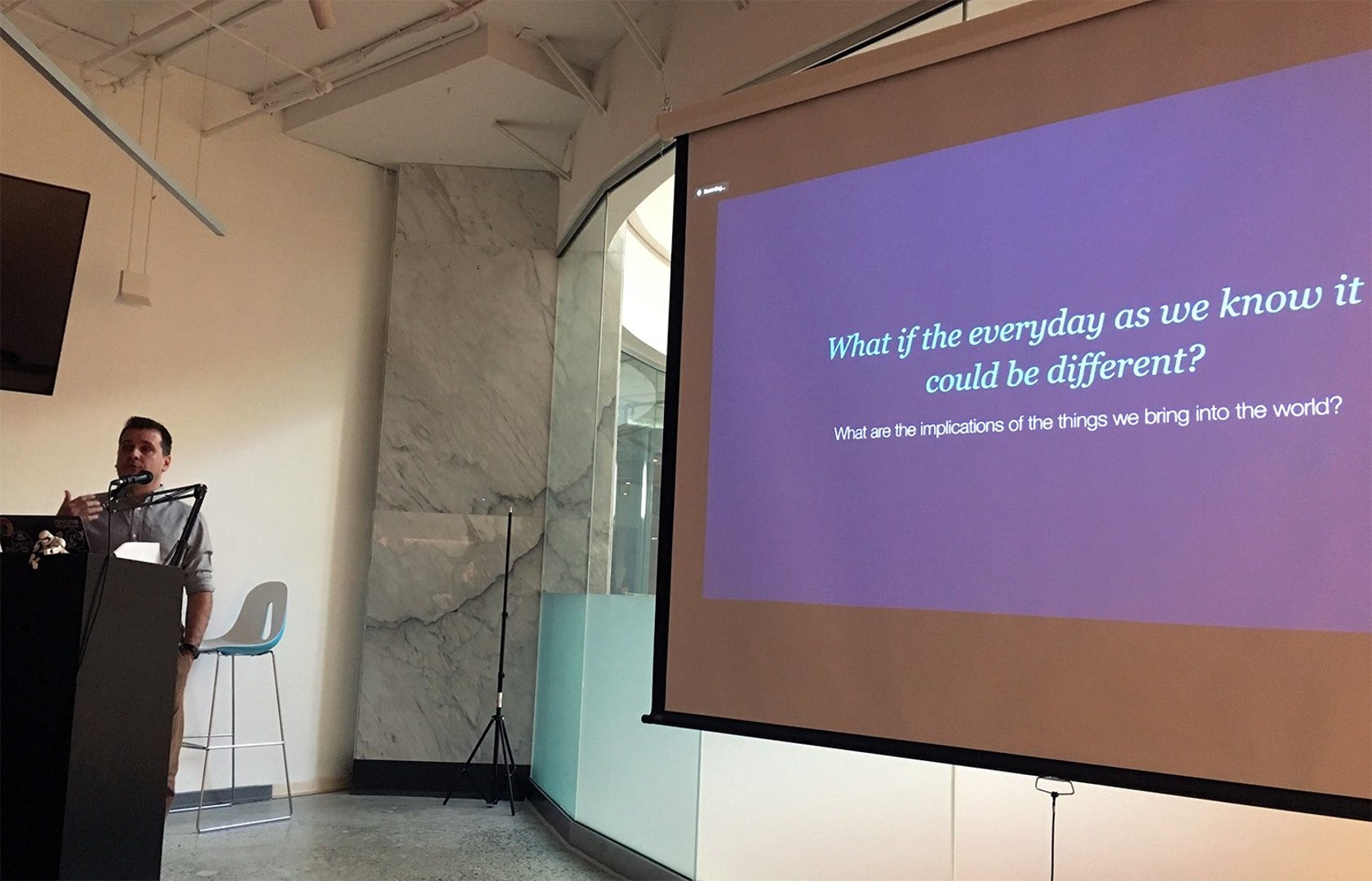Creating a collaborative culture of innovation

Published 2023-02-01
Summary - Innovation requires shared responsibility. Internal surveys, lightning talks, and more are essential in fostering an effective innovation culture.
In a recent article, Allan Wille - Klipfolio’s Chief Innovation Officer - shared his thoughts on why companies should care about creating a culture of innovation. Companies that don’t spend time exploring future trends, may not survive in competitive markets.
Companies that want to survive and grow must create the conditions to innovate. This means being able to identify trends and to come up with new ideas to address those trends. Setting the conditions for an innovative environment is an ongoing commitment because new trends emerge all the time.
Innovation must be a shared responsibility. Everyone in the company should feel compelled to contribute. This guarantees that new ideas are continuously flowing into the process. There are some obvious advantages in making innovation a collaborative effort. Having more people involved means having a more diverse set of perspectives to explore future opportunities. Also, giving everybody a chance to provide ideas boosts team morale and creates shared ownership (fundamental for when it’s time to implement those ideas).
Creating a culture of innovation may seem daunting - it requires a deliberate effort to make it happen. However, a few simple activities can be very effective in making a company take the first steps towards building an innovative environment.
In this article, I want to share a few initiatives we've taken at Klipfolio to formalize the collaborative culture of innovation.
It starts with a purpose
Before jumping into describing the initiatives, it is necessary to talk about purpose. If you are unsure about your company’s mission, stop reading this article and go check why your company needs to have a purpose.
The purpose is the reason for the existence of your company. It’s the foundation on which your team and you stand to make decisions that will impact your customers. Without a purpose and a clear mission, it will be extremely hard to succeed in creating a culture of innovation.
One for all and all for one
You might be asking yourself: If innovation is a collaborative process, why does Klipfolio have a Chief Innovation Officer? Isn’t it contradictory to share the responsibility for innovation and, at the same time, to have a person in charge of it?
At Klipfolio, we believe that it’s not only possible, but also highly beneficial, to do both. Here’s why:
To begin with, the role of the Chief Innovation Officer is not about being in charge (like a boss) as much as it is about fostering a cross-functional, all-hands philosophy about innovation. It is essentially about facilitating and creating the conditions in which innovation can emerge. This means educating the company on what innovation means, explaining how it is done and how to evaluate it, and advocating for innovative ideas to be adopted. Depending on what the context is, for example, if the company is not willing to take risks or has never intentionally thought about being innovative, building the bridges to make innovation happen could easily be a full-time job.
It is possible that the controversy about having someone leading the innovation initiative comes from mixing a job role with a mindset. Saying that innovation is a shared responsibility means that everybody in the company needs to have a mindset of innovation. Drawing a parallel, it is commonly expected that employees will adopt a cost-effective mindset, saving the company’s money by avoiding unnecessary expenses. Not all employees are in the finance team of course, but the fiscally responsible mentality and responsibilities are distributed to all the teams. Similarly with branding. Not everybody works for the marketing team but the company certainly expects all team members to represent and advocate for the brand. So, why would innovation be different?
You may or may not choose to have a Chief Innovation Officer. The job title, in this case, is not especially relevant. But having someone championing the initiative is. The role will most likely help in creating the right conditions and that means, among other things, making sure that the innovation mindset is universal.
Creating the spark
Hopefully creating excitement around innovation shouldn’t be too difficult. In general, people feel good about being part of forward-thinking teams. However, engaging team members and making them part of the process, especially in the early stages, can be complex.
This complexity stems from making sure everyone is heard because, in the best case, everyone is excited to participate. In the worst case, team members are passively waiting for others to guide the process. Whatever the case may be, conducting internal surveys early in the implementation process can be really helpful in engaging people on their own time.
Internal surveys are a simple and relatively easy way to create excitement and engagement around innovation. Surveys are a very inclusive method that helps tease out the team’s opinions on topics they are passionate about. Consider using internal surveys to ask your team about their perception of the current state of your product/service. Also, challenge the team to speculate about the future challenges and opportunities in the problem domain your company is operating in.
At Klipfolio, we designed an internal survey to be the initial step of our innovation initiative. The survey was open to all staff, and the goal was to understand our current baseline as well as to collect insights of an envisioned future. Here are the questions we asked:
- How would you describe our current customers?
- What are the two things they love most about Klipfolio?
- What are the two things they want the most with respect to Klipfolio?
- Who, in your opinion, will be our future target user?
- Thinking of this persona, in the future, what two things will be different about their day?
- How will Klipfolio help them succeed?
- What do you think the next big trend in technology will be?
Most likely, the results of the internal surveys will reveal a broad set of perspectives from which you can extract a few themes about what might be coming in the future. These themes represent the insider view, the gut feeling, and the experience-based opinions of those in the battlefront working on and with your product/service on a daily basis. Compare the lessons from the surveys against trends suggested by market experts to see how they align or diverge.
Deepening the conversation
Another good way to spark a culture of innovation is through promoting lightning talks. A lightning talk is a very short presentation?—?usually 10 to 15 minutes long?—?given with the goals of sharing knowledge and engaging the audience to motivate action.
In the context of Klipfolio’s innovation initiative, lightning talks deepened the conversation about topics that emerged from the initial internal surveys such as technology and industry trends. These talks also created the opportunity to explore new topics such as global mega-trends, and topics that instigated creative thinking within the frameworks of Design Thinking and Speculative Design.
Lightning talks are great for planting the seed of collaborative culture and for expanding and sharing knowledge about what companies need to prepare for in the future. It is also a safe space for team members to contribute with richer and more fleshed out ideas (more than they would through a survey, for example). So, to increase the potential for innovation, it is extremely important to make sharing insights an established practice.

Lightning Talks are good for creating excitement around innovation.
Converging and aligning ideas
Both internal surveys and lightning talks are very effective ways of laying the ground for an innovation culture and opening the door for people to express their ideas. However, to foster a collaborative exploration of these ideas, it is necessary to converge them in the format of workshops and finalize the collective vision.
Here’s the thing: sparking the interest and deepening the thinking about new ideas is essential for a culture of innovation to thrive but if the team members cannot see themselves executing on those new ideas, all the innovation talk is in vain. Translating innovative insights into a concept that is tangible and executable will keep the team focused and more resilient to endure the long journey towards implementation. If the team is aligned and can clearly see the north star, it will be able to withstand the pressure of reactive, short-term demands in favour of the long-term goal.
Blue Sky workshops are highly effective for converging ideas, building alignment, and articulating concepts. The caveat is that workshops are less inclusive for a very practical reason: depending on the size of the team, having everybody participate can be nearly impossible.
In most cases, blue sky workshops will have a representation of the larger group. This means it is important to be extra careful with the preparation of the activity. When planning a blue sky workshop, it is crucial to consider:
- What information from previous activities should be used to set the context for participants. Not all workshop attendees would have participated in previous activities. So, set some time in the beginning to share a summary of the insights collected so far.
- Make sure all key stakeholders are included. Equally important, have a list of people that don’t need to (or shouldn’t) be included. Keeping in mind the goal of the workshop will help you to define those two lists. For example, when we decided to run a blue sky workshop about the vision for the product, the list of participants included designers, product managers, developers, marketing, and customer support. It was a product-focused workshop. In comparison, a workshop about the holistic customer experience would likely include other teams such as sales, business ops, etc.
- Whenever possible, invite the executive leadership. This will facilitate buy-in as the company leaders will share the ownership of the outcomes - It won’t feel as they are being imposed with an idea they are merely supposed to support.
- Because many team members may not be involved in the workshop, it is highly recommended to plan for a follow-up activity where the outcomes are shared with the entire team, which will create the opportunity to capture any ideas or opinions that might not have been represented in the workshop.

Blue Sky workshop. Converging ideas helps the entire team understand the vision.
Just the beginning
It is the commitment to fulfill the company’s mission, and the intention to stay ahead of market trends, that will sustain a long-lasting culture of innovation. It is by sharing the responsibility to innovate, and through a collaborative culture that teams will endure the ups and downs of building on innovative ideas.
Identifying and organizing activities that create conditions for innovative thinking to emerge in your company is just the beginning. Hopefully, the initiatives shared here will help you and your company to get started.
If you are looking into investing more into the culture of innovation at your company or if you already have experience with similar initiatives, we’d love to hear it! Share your opinions, questions, things that worked, and things that didn’t, with us on Twitter. For us at Klipfolio, the journey has just started, and we are excited to share what we learn along the way.
Related Articles

12 Important Sales Enablement Metrics You Shouldn't Miss
By Grace Lau — September 19th, 2025
2025 BI and Analytics Trends for Small and Mid-Sized Businesses
By Allan Wille, Co-Founder — December 18th, 2024
Promoting data literacy with metrichq.org and the power of AI
By Allan Wille, Co-Founder — October 12th, 2023

